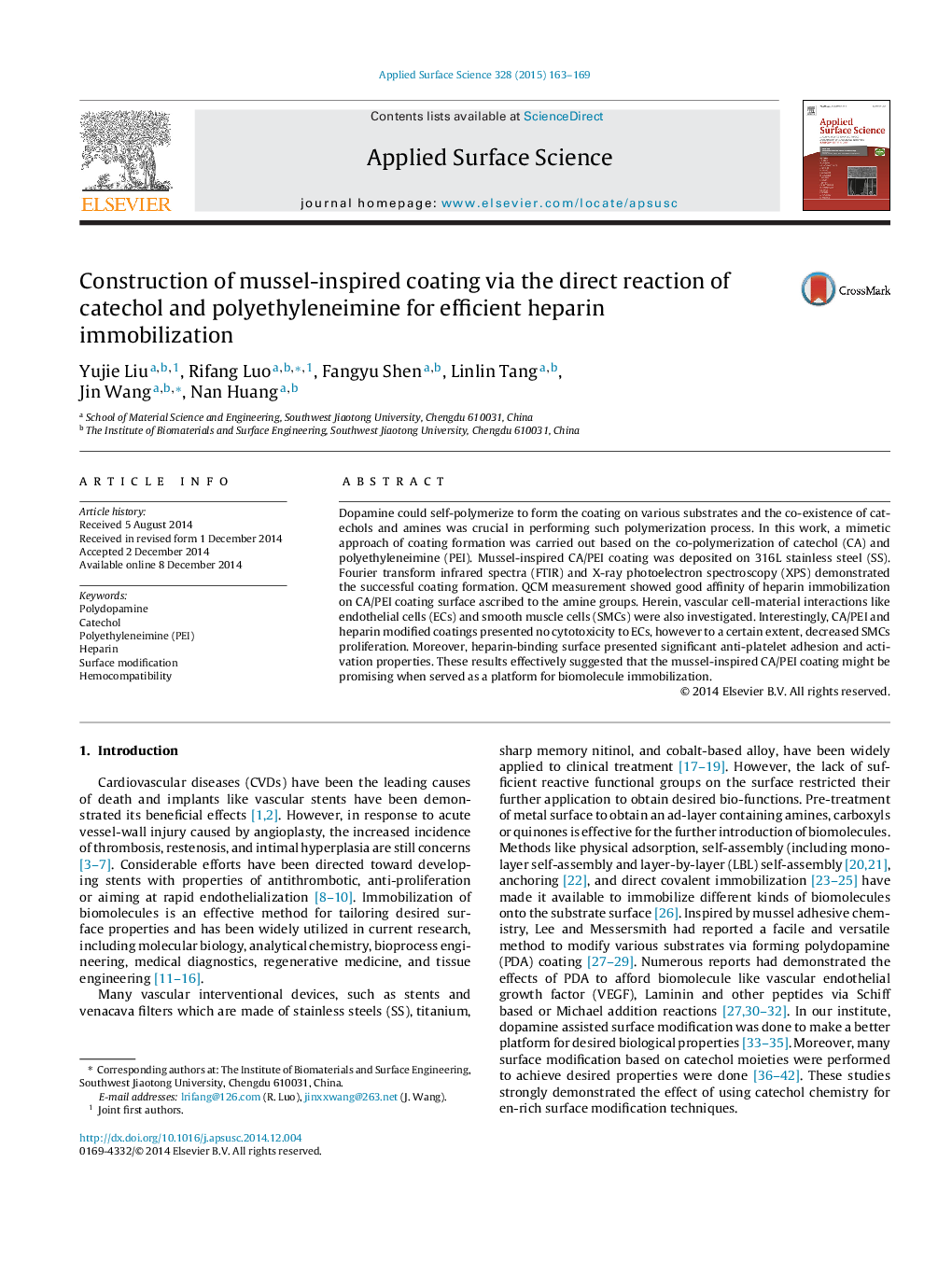| Article ID | Journal | Published Year | Pages | File Type |
|---|---|---|---|---|
| 5348816 | Applied Surface Science | 2015 | 7 Pages |
Abstract
Dopamine could self-polymerize to form the coating on various substrates and the co-existence of catechols and amines was crucial in performing such polymerization process. In this work, a mimetic approach of coating formation was carried out based on the co-polymerization of catechol (CA) and polyethyleneimine (PEI). Mussel-inspired CA/PEI coating was deposited on 316L stainless steel (SS). Fourier transform infrared spectra (FTIR) and X-ray photoelectron spectroscopy (XPS) demonstrated the successful coating formation. QCM measurement showed good affinity of heparin immobilization on CA/PEI coating surface ascribed to the amine groups. Herein, vascular cell-material interactions like endothelial cells (ECs) and smooth muscle cells (SMCs) were also investigated. Interestingly, CA/PEI and heparin modified coatings presented no cytotoxicity to ECs, however to a certain extent, decreased SMCs proliferation. Moreover, heparin-binding surface presented significant anti-platelet adhesion and activation properties. These results effectively suggested that the mussel-inspired CA/PEI coating might be promising when served as a platform for biomolecule immobilization.
Related Topics
Physical Sciences and Engineering
Chemistry
Physical and Theoretical Chemistry
Authors
Yujie Liu, Rifang Luo, Fangyu Shen, Linlin Tang, Jin Wang, Nan Huang,
